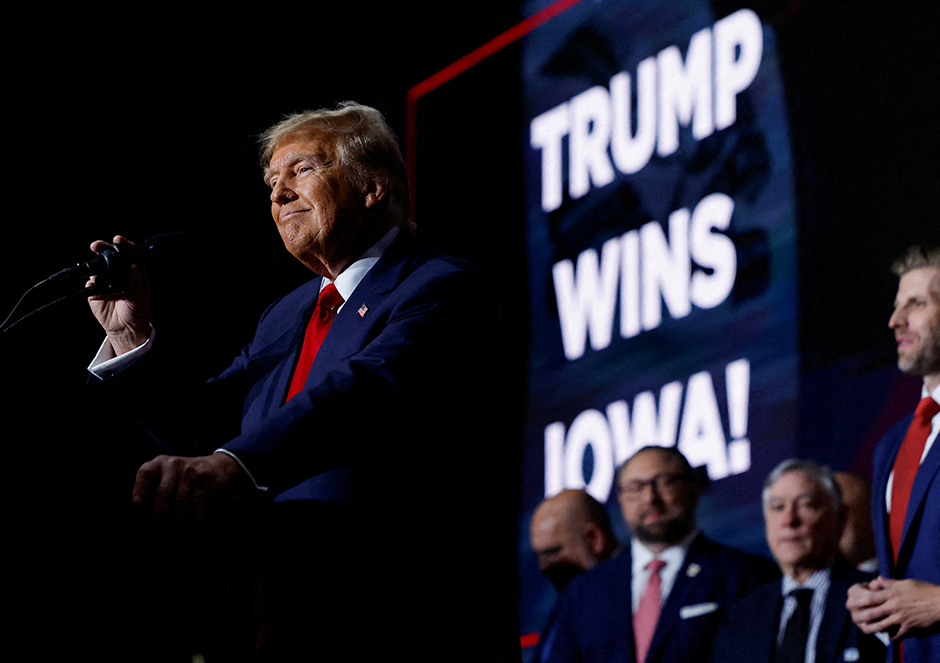Trump did better among rural voters than his Republican challengers did, but the size of his lead in metro counties was a key part of his victory.
Sixty percent of rural voters supported Trump on Monday during the Iowa Caucus. Governor Ron DeSantis won 18% of the rural vote, while former Governor of South Carolina Nikki Haley trailed behind with about 13% of the rural vote.
Although Trump didn’t win a straight majority of votes in Iowa’s metropolitan counties, he beat each of his major challengers by more than 2 to 1 — enough to have won even if those opponents had pooled their votes. In Iowa’s metropolitan areas like Des Moines, Iowa City, and Cedar Rapids, Trump received 48% of the vote. Governor DeSantis received 22% of the urban vote, compared to Haley’s 21%.
Keokuk County, Iowa, a rural county of 9,600, showed the most support for Trump on Monday night. Three quarters of Keokuk voters supported Trump at the caucus. Rural Appanoose County and rural Jackson County both supported Trump by 72%, but so did Wapello County, a metropolitan county of 35,000 residents in the southeastern part of the state.
Residents in the metropolitan counties of Story, Johnson, and Polk showed the least support for Trump. Trump only received 34% of the vote in Story, a county of over 99,000 residents just 40 miles north of Des Moines.
Trump Is Not a Rural Phenomenon
Trump’s margins in rural areas have led some to state that rural voters have an outsized influence on electoral politics. “Trump appears poised to win … and claim victory in Iowa’s caucuses, powered largely by his overwhelming support among rural voters,” wrote John McCormick of the Wall Street Journal last Friday. But that’s hardly the truth.
McCormick focuses on interviews from residents of Hancock County, Iowa, a rural county of 11,000 where 65% of voters supported Trump in the 2024 caucus. “Places like Iowa’s Hancock County are helping propel the former president past legal woes and challengers,” McCormick said.
Rural people only make up 23% of Iowa’s 3.1 million residents. Those rural voters comprised 30% of Trump’s total support. Out of all votes cast for Trump at the Iowa Caucus, 70% of his 56,000 votes came from urban residents.
Margins do matter, though. McCormick and I can agree on that. Even 2,000 fewer votes from rural Iowans would have taken Trump’s victory down from 51% to 49%, a small but vital difference if this were a presidential election.
But the truth is that Trump’s margin of victory was overwhelming, even among urban residents. The gap between Trump and DeSantis, his closest challenger, was 26 percentage points in urban areas and 42 percentage points in rural areas.
Rural voters are important. And in close elections, their support can be decisive. But in a landslide like Trump’s victory in the Iowa caucuses, it’s a stretch to say they “power” the victory.
Methodology
This analysis uses the 2013 Office of Management and Budget Metropolitan Statistical Areas to define urban and rural. Counties in metropolitan statistical areas are categorized as urban, while counties that are not in a metropolitan statistical area are categorized as rural.
This article first appeared on The Daily Yonder and is republished here under a Creative Commons license.![]()





